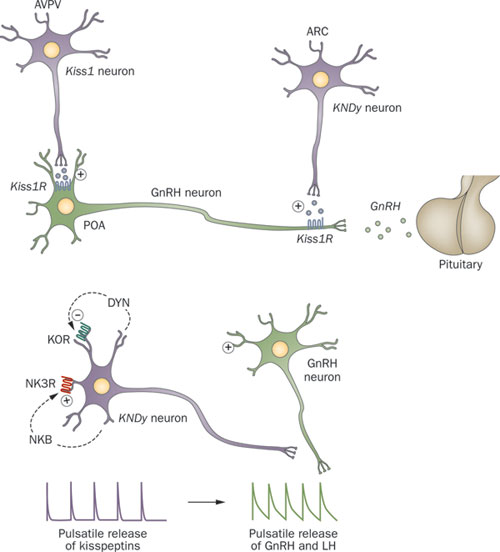Neuroendocrine control of metabolism and growth
Neuroendocrinology is the study of broad interactions among the nervous system and the endocrine system, involving the biological features of the cells which participate, and how they functionally correspond. The nervous and endocrine systems frequently act altogether to regulate the physiological procedures of the human body. Neuroendocrinology come from the recognition that the brain, mainly the hypothalamus, controls secretion of pituitary gland hormones, and has consequently extended to investigate several interconnections of the nervous systems and endocrine.
The secretion of somatotrophin, or growth hormone, like other anterior pituitary (AP) hormones, is regulated via a complex neuroendocrine control system which comprises two major hypothalamic regulators, i.e., GHreleasing hormone (GHRH) and somatostatin (SRIH), exerting stimulatory and inhibitory in?uences, correspondingly, on the somatotrope cell. Both GHRH and SRIH, those are subject to modulation by other hypothalamicpeptides and by complex networks of neurotransmitter neurons, are the ?nal mediators of metabolic, neural, endocrine, and immune in?uences for GH secretion in the pituitary.In mammalian neuroendocrine constitutes the metabolic processing of progesterone and associated natural progestins is mainly a reductive process including the C-4,5 double bond and the C-3 and C-20 ketones.

The major products of the neuroendocrine methods of progesterone in female rats are the two 5 alpha- and 3 alpha-reduced metabolites, 5 alpha-dihydroprogesterone and 3 alpha,5 alpha-tetrahydroprogesterone, with lesser quantity of the corresponding 20 alpha-reduced products. Sure of these metabolites generate some, though not all, of progesterone's biological effect. 5 alpha-Dihydroprogesterone and 3 alpha,5 alpha-tetrahydroprogesterone, in specific, have potent progesterone-like effect on neuroendocrine functions, like gonadotropin regulation. The two other main ovarian progestins, 20 alpha-dihydroprogesterone & 17 alpha-hydroxyprogesterone, are metabolized in a comparable manner. The main neuroendocrine progestin conversions therefore emerge to be 5 alpha-reduction and 3 alpha-hydroxysteroid oxidoreduction. In hypothalamus and anterior pituitary, the enzymic activities which catalyse these conversions emerge to be under ovarian control and emerge to differ with changing reproductive states. These quantitative modifications in processing, altogether with the potent progesterone-like effects of certain metabolites, recommend that these neuroendocrine conversions might provide a significant mechanism for mediating few of the effects of progesterone. Alternatively, few metabolites, by duplicating selected effects of progesterone, might give a means of prolonging certain of its effects whereas others are terminated.